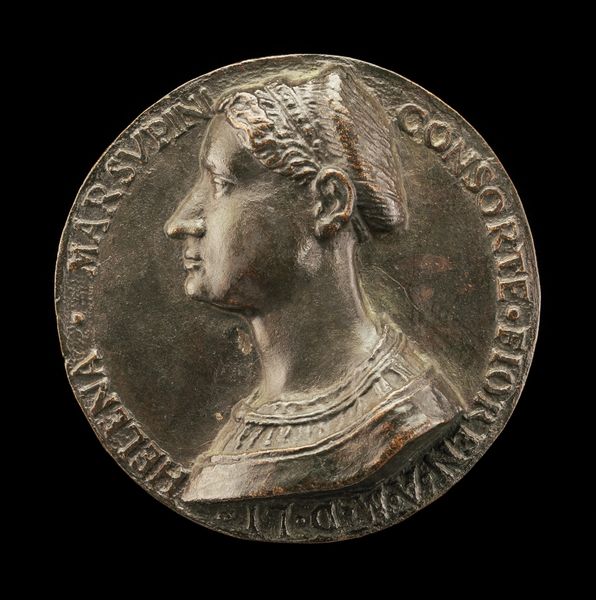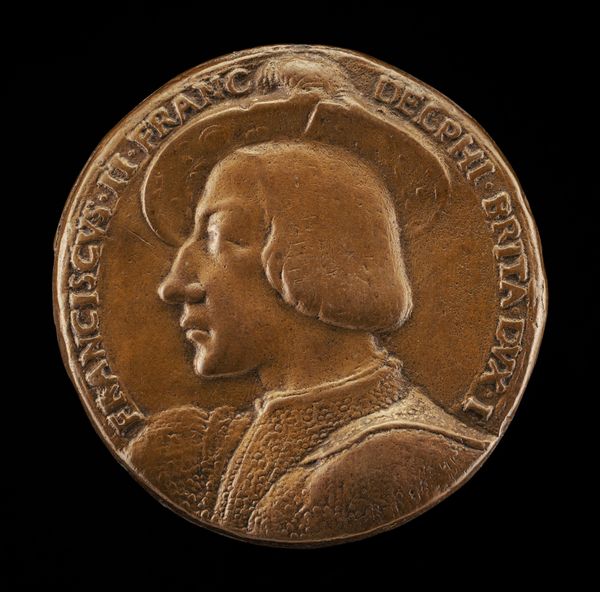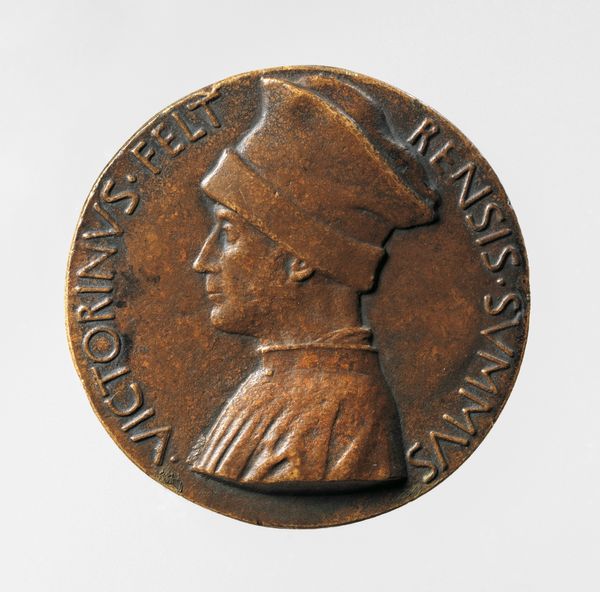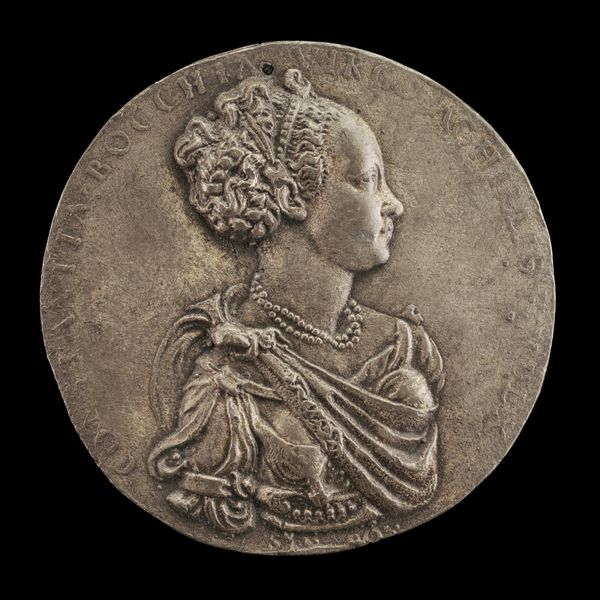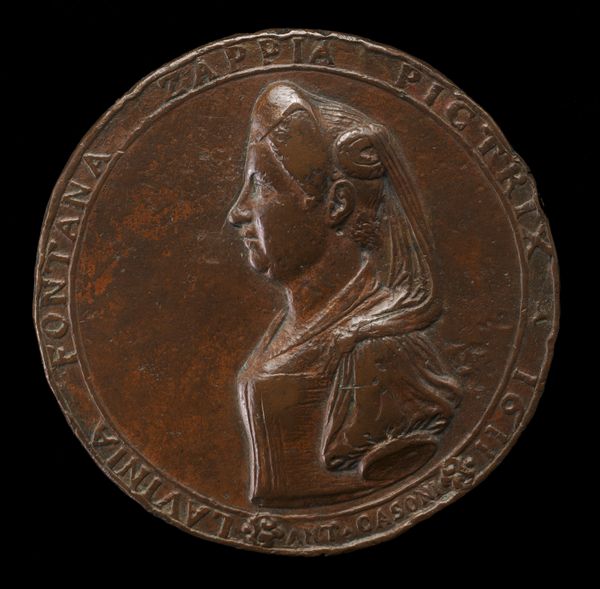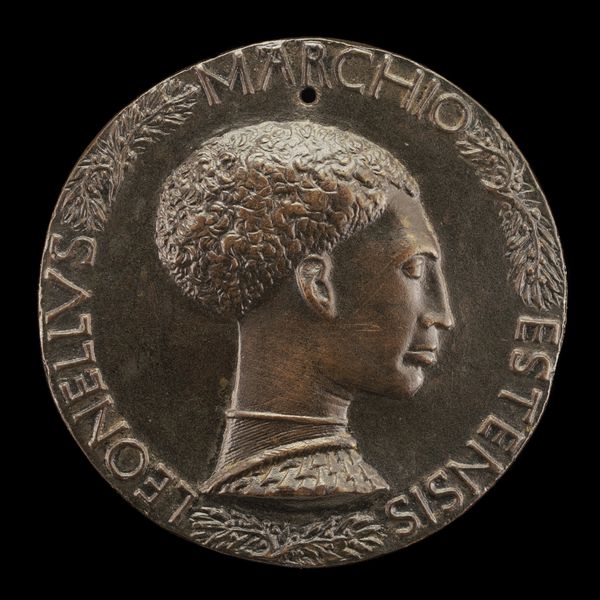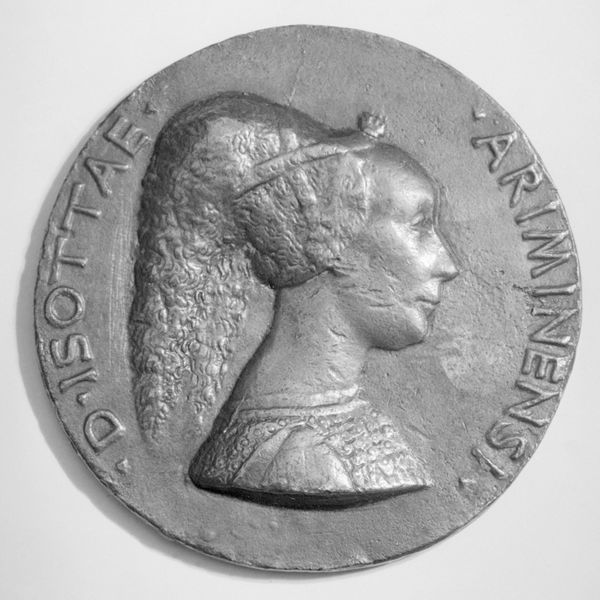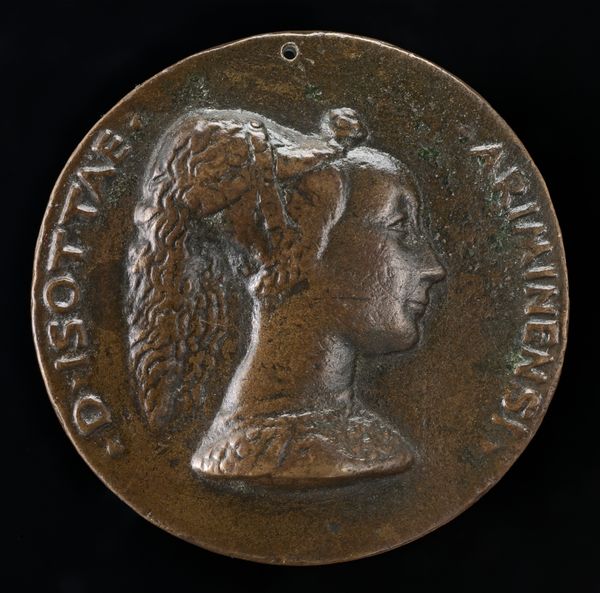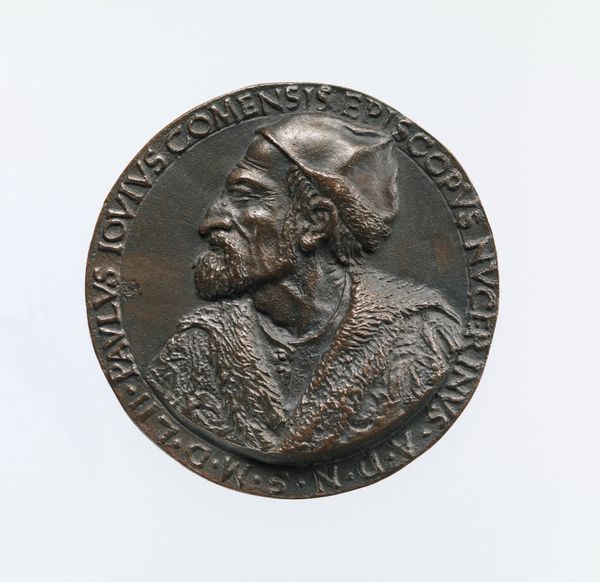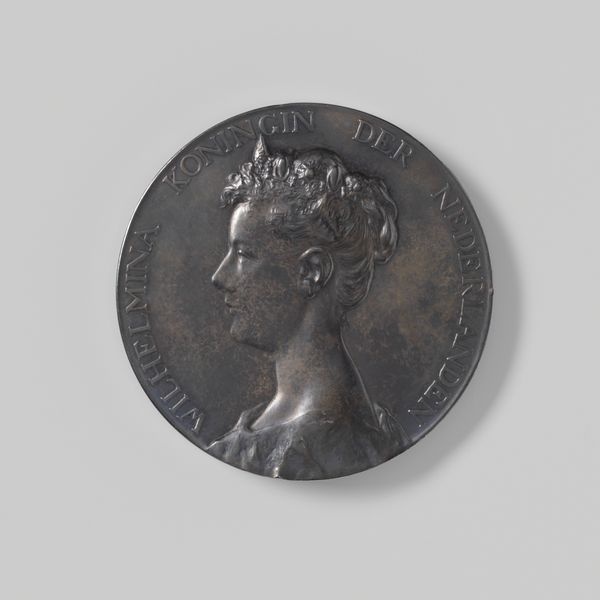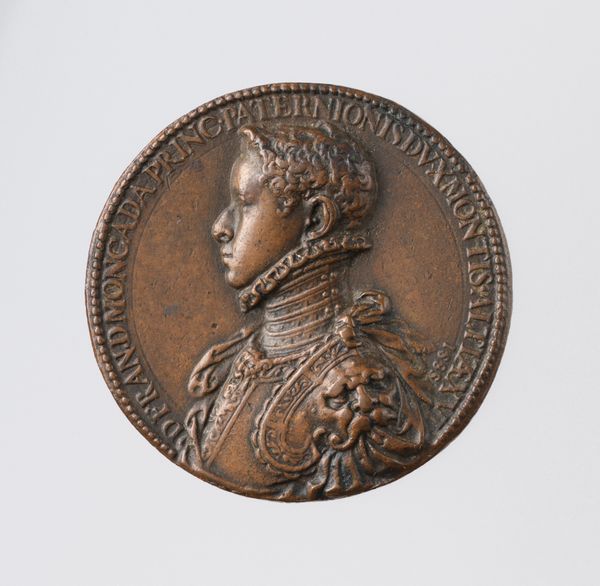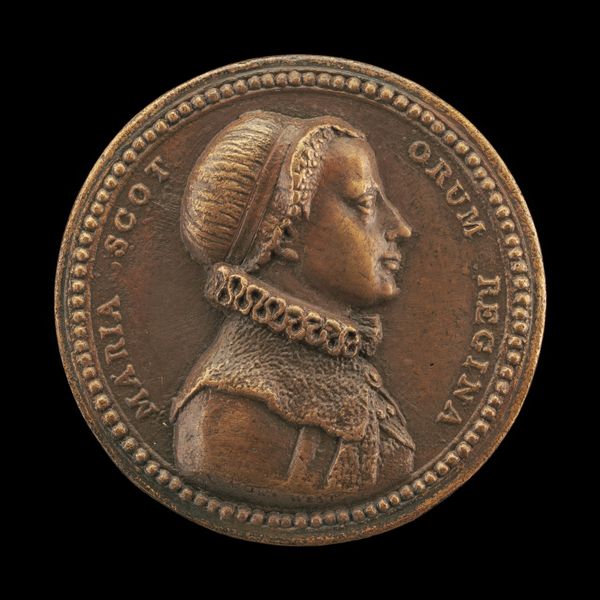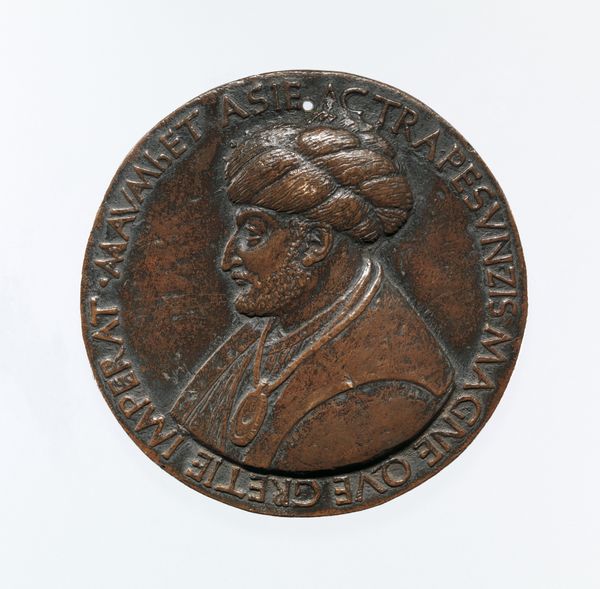
Portrait medal of Cecilia Gonzaga (obverse); Innocence and a Unicorn in a Moonlit Landscape (reverse) 1447
0:00
0:00
sculpture
#
portrait
#
medal
#
sculpture
#
11_renaissance
#
sculpture
#
italian-renaissance
#
profile
Dimensions: Diameter: 3 5/16 in., 142.55g (8.4 cm)
Copyright: Public Domain
Curator: Here we have Pisanello’s portrait medal of Cecilia Gonzaga, dating to 1447. It's a bronze piece, a little larger than the palm of your hand. Editor: It's beautiful, isn't it? Almost austere in its simplicity, yet possessing such presence. You can feel the weight of the material, that heavy bronze, hinting at its value and significance. Curator: These medals were part of a revival of classical forms, connecting Renaissance patrons with the glory of ancient Rome. Commissioning them became a popular way for rulers and intellectuals to express their status and humanist ideals. The Gonzaga family, rulers of Mantua, were keen participants in this cultural trend. Editor: So, bronze wasn't just the affordable choice here, it’s about invoking classical values. And look at the precision. Each inscription, the fine details of her hair, the drapery... it's not just aesthetic, but an elaborate labor to be recognized. Curator: Exactly. Cecilia herself was quite a remarkable figure. Destined for the convent, she received an exceptional humanist education. The inscription around her portrait proclaims her "Cecilia, virgin, daughter of Gianfrancesco, first Marquis of Mantua." It clearly situates her within a powerful lineage, whilst also alluding to her chaste status. Editor: And the reverse side reinforces this, showing her as innocence personified with the unicorn in a moonlit landscape. Such symbolic gestures in art and its physical make, like bronze with its source, can convey messages in the hands of people, their standing, wealth, and societal control. The whole artwork reflects it: bronze labor and display are forms of language. Curator: Indeed. These medals circulated widely among elite circles, spreading not only the Gonzaga family's image but also Pisanello's fame as a leading artist. Cecilia’s portrayal here certainly enhanced her own reputation as well, reflecting her scholarly dedication and virtuous character. Editor: This object reveals how the cultural elite not only displayed wealth, but also participated in molding perceptions through symbolic art, even how such art served to construct one's position in society. Fascinating to witness that interplay, then and even now, no? Curator: Absolutely. It gives us a unique lens through which to view not only artistic achievements, but also broader issues of power, gender, and social performance in the Renaissance.
Comments
No comments
Be the first to comment and join the conversation on the ultimate creative platform.
